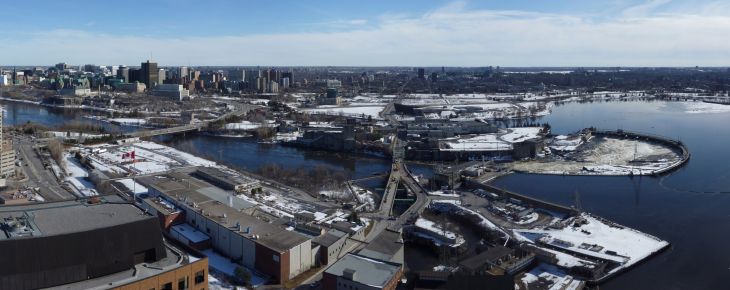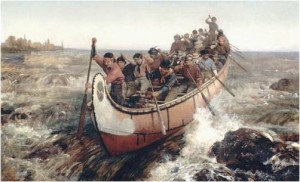


Frances Anne Hopkins, Shooting the Rapids, 1879
The first 2½ centuries of European contact were characterized by warring Aboriginal nations, voyageurs, fur traders, coureurs des bois and missionaries, all passing through the Chaudière. Although many trading posts were eventually established along the Ottawa from Montreal to Nippissing, the Chaudière was a major stop. It was known as the most strenuous stretch of portages: the Chaudière Falls and one mile to the west, the little Chaudière (at ParcBrébeuf in Val Tetreau there remain today stone steps on the path laid by voyageurs and heavily trodden by the fur traders) and the Deschènes, still further west, all on north shore.
Explorers of what would become Canada, were seeking a route from Montreal through Lakes Nippissing, Superior and Winnipeg to the Rocky Mountains beyond: Champlain’s “scouts”, Etienne Brulé and Nicholas Vignau, preceded him (in 1611 and 1612); after him, Nicolet, Radisson, Brèbeuf and Lasalle in the 17th century: Laverendrye, Alexander Henry the Elder, Peter Pond, Alexander Mackenzie in the 18th century; Alexander Henry the younger, David Thompson and Simon Fraser in the 19th century. All paused and portaged at the Chaudière.
 Wordpress
Wordpress





